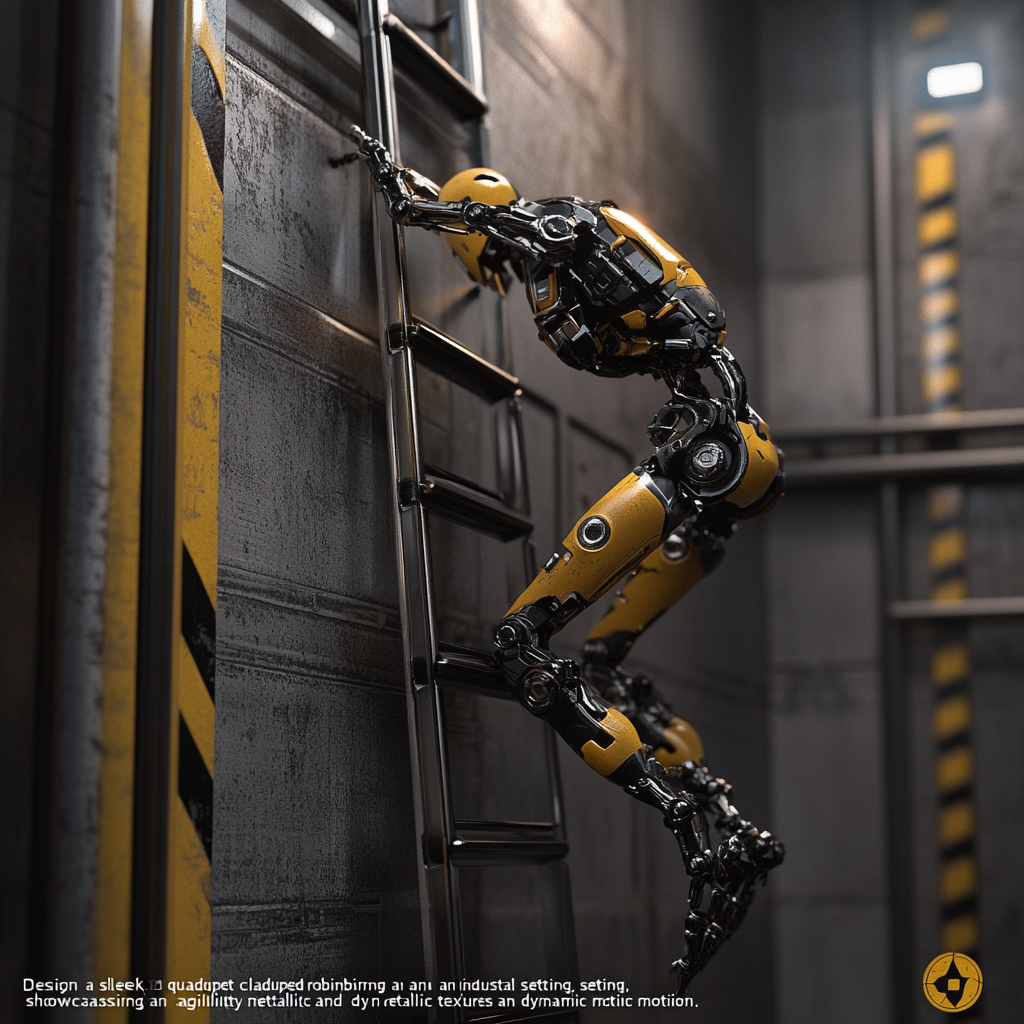
Robotic Quadruped Masters Ladder Climb
Picture this: in the realm of robotics, where machines are increasingly taking on the roles we once thought only the human body could fulfill, a team of engineers at ETH Zurich has just leveled up the game. They’ve achieved something astonishing—teaching a quadruped robot to conquer the humble ladder, but with an elegance and speed that would make even a seasoned handyman nod in approval. That’s right, this isn’t your granddad’s robot lagging behind with slow, clunky movements. This is a revolution in robotic agility that we simply cannot overlook.
Now, ladders might seem like straightforward tools. Just a bunch of rungs and crossbars, right? But for our metallic friends, alas, they’ve been a notorious nemesis. Previous attempts—mostly where humanoid robots tried to mimic us—were painfully slow and absolutely not designed for the hustle and bustle of industrial life. No one wants a robot that tiptoes up a ladder as if it’s walking on thin ice. Imagine waiting for a robot to reach a high shelf while time ticks away; frustration would ensue faster than a cat can knock a glass off a table!
Enter the ANYMal robot, sculpted by the brilliant minds of ETH Zurich's Robotics Systems Lab. This isn’t some run-of-the-mill creation. No, it’s a quadruped beast equipped with hooked paws that grip ladder rungs with a finesse resembling a human hand. Need to stop the robot from plummeting down an unyielding metal structure? That’s what these ingenious hooks are for—gripping securely and climbing like a pro. I mean, here’s a robot that not only climbs but also does so with poise, just like when you’ve had a bit too much caffeine and try to conquer those steps before folks at the party notice your less-than-graceful moves.
So, how on Earth did they do it? The magic ingredient lies in an avant-garde training method called reinforcement learning. But hold on, this isn’t just any average “teach it something and hope for the best” situation. No, this process involves a rather clever teacher-student model. The ‘teacher’ robot, which sounds ominously wise like a martial arts master, learned from hours of video simulations—everything from smoothly climbing a ladder to grappling with wobbly rungs and unfortunate missteps. Then comes the ‘student’ robots, eager to learn and adapt. By hustling through simulations and real-world tests, they refined their skills until they were nimble ladder climbers.
During training, the teachers were armed with a treasure trove of sensory data. They had the insights of position and orientation of the ladder, aware of the external disturbances that might arise. Imagine the teacher saying, “No, you silly student, that rung is about to sway!” and the student robot learning exactly how to adjust to avoid a tumble. This level of detailed training allowed ANYMal to show off a jaw-dropping 90% success rate when tasked with climbing angled ladders—can you believe that? Swaying upwards like a majestic goat rather than an awkward toddler learning to balance.
What’s even more mind-boggling is the robot's autopilot-like ability to self-correct in real time. So, picture this: if it misjudges a rung or slips unexpectedly, it can adjust its movements almost instantaneously. If you’re picturing a cartoonish scene with a creature flailing around, you’re only partly right—this is about robotic finesse. It’s as if the robot has been given a secret manual on “How To Be an Agile Ladder Climber for Dummies,” only this manual is written in binary.
And hold your horses—ETH Zurich isn’t stopping with just ladder climbing. Oh no, they’re already cooking up plans to incorporate even more sensory modalities to amp up the robot's skills. Imagine depth cameras tantalizingly grasping the nuances of an unstructured environment, enabling our courageous quadruped to scale ladders wherever it darn well pleases—without needing those pesky motion capture systems. This means the industrial world might soon find itself awash in a sea of agile robots, scuttling up and down with the finesse you’d expect from precision equipment.
This evolutionary leap in climbing capability isn’t merely for show, nor is it restricted to fanciful imaginings of what robots might play at during their spare time. The ramifications for industrial robotics are electric! These quadrupeds can now be deployed to tackle challenges that previously required human oversight. Think inspections in narrow spaces or rescue operations. All because someone had the audacity to teach a robot how to scale a ladder with panache! We are truly at the brink of unleashing the full spectrum of robotic potential, shifting them from simplistic tasks to extraordinary feats.
In closing, the successful ladder-climbing antics of quadruped robots like ANYMal present a mesmerizing narrative of progress in robotics and artificial intelligence. The barriers once believed to define the limitations of machines crumble before our eyes, revealing a future where they do far more than we ever imagined. Want to stay up to date with the latest news on neural networks and automation? Subscribe to our Telegram channel: @channel_neirotoken.
Remember, the robotic world is gearing up to take on new heights, and keeping yourself informed is the first step towards joining this extraordinary revolution. Now, let’s get those robots climbing!

